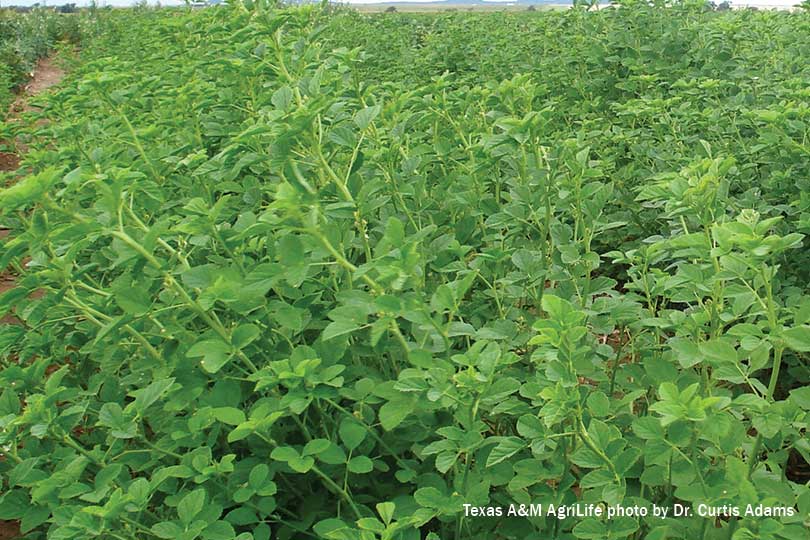By Jennifer Dorsett
Field Editor
Texas A&M AgriLife researchers are conducting several studies to help farmers understand guar and the legume’s value to their farms on the Rolling Plains and South Plains.
Although not a well-known crop, guar has been grown in the Lone Star State for more than 100 years, according to Dr. Curtis Adams, AgriLife Research crop physiologist in Vernon.
Guar is present in many foods. The endosperm of the guar bean is ground into a fine white substance that can be used as a thickener or stabilizer. It is also present in many personal care items like lotion, toothpaste or conditioner. Guar is also used in oil and gas exploration as a viscosifying agent.
Guar is primarily grown in India and Pakistan, but it is an ideal crop for semi-arid regions such as the South Plains and Rolling Plains areas of Texas. Guar can be rotated with other crops to aid in soil nitrogen fixation.
Dr. Calvin Trostle, AgriLife Extension agronomist in Lubbock, said there is a worldwide misconception that guar plants do not nodulate as effectively as other legumes, causing farmers to shy away from the crop.
There are few legumes that will grow in areas that don’t receive much rainfall, Trostle said, but guar could fill in that gap and provide much-needed nitrogen fixation benefits.
The results of the AgriLife study show that guar can produce many nodules when treated with a beneficial bacterial culture applied at the time of planting, and this held true in several different soil types.
Trostle said AgriLife will continue studying guar to learn more about best crop practices in Texas, as well as ways to improve nodulation and to keep farmers up-to-date on planting and growing techniques.
Click here for more information on guar and the AgriLife Research studies.

